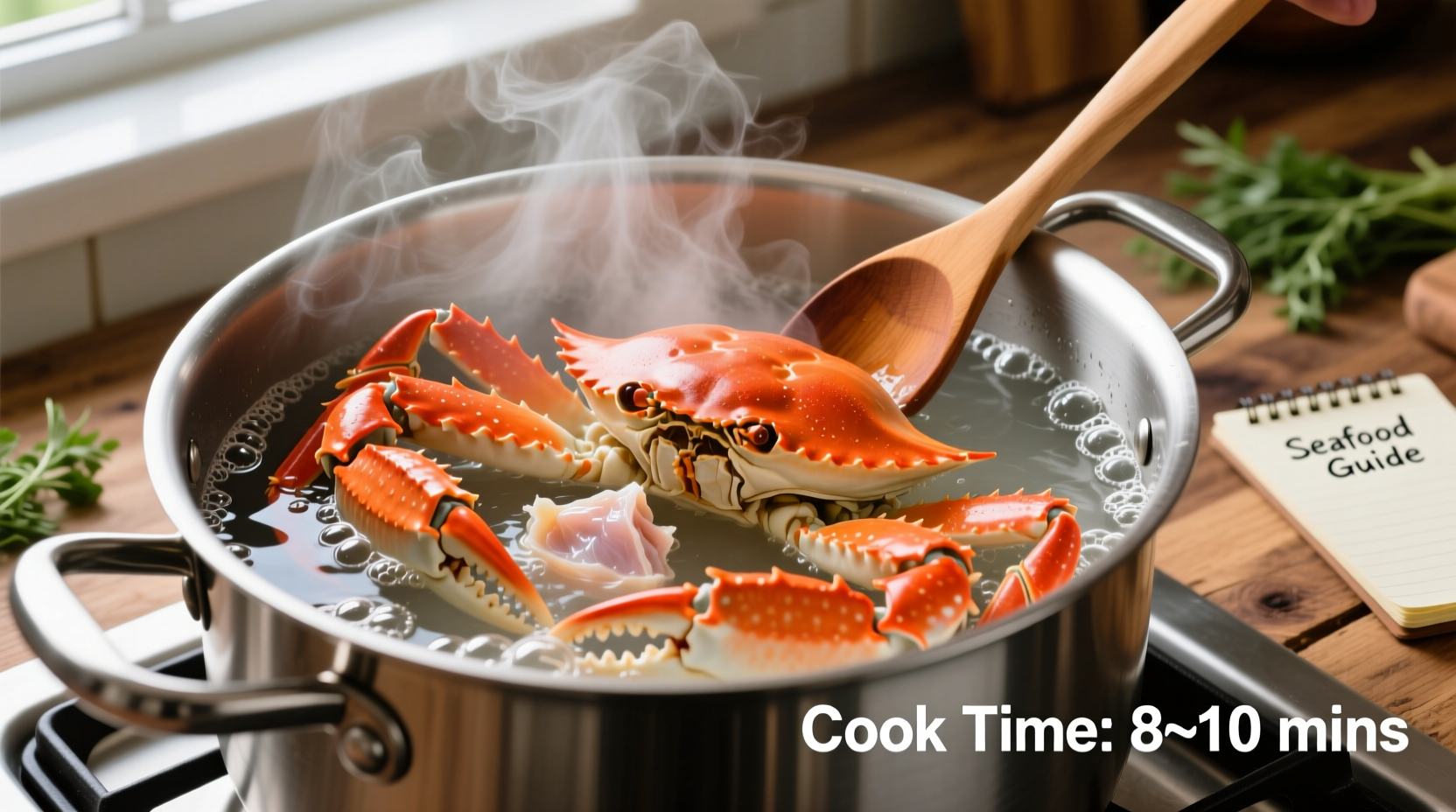Nothing ruins a special seafood dinner faster than rubbery, overcooked crab legs or unsafe undercooked shellfish. Getting the timing right transforms frozen or fresh crab from ordinary to extraordinary with minimal effort. This guide delivers precise cooking times for every method backed by seafood science, so you'll serve perfectly tender crab every time—whether you're steaming, boiling, baking, or grilling.
Crab Leg Types: Why This Determines Your Cooking Time
Before setting your timer, identify your crab type—this is the single biggest factor affecting cooking duration. Most grocery store "frozen" crab legs are actually pre-cooked, then flash-frozen for preservation. True raw crab is rare outside coastal regions.
| Crab Type | Pre-Cooked? | Texture Clue | Shell Color |
|---|---|---|---|
| King Crab | 95% pre-cooked | Meat firm but tender | Bright red spots |
| Snow Crab | Always pre-cooked | Meat slightly springy | Deep red |
| Dungeness | Often raw | Translucent when raw | Brown/green raw → red cooked |
According to the USDA Food Safety and Inspection Service, pre-cooked crab only needs reheating to 145°F internal temperature, while raw crab must reach this temperature to destroy pathogens. This explains why pre-cooked crab needs significantly less time.
Steaming: The Gold Standard Method
Steaming preserves delicate flavor better than boiling while preventing waterlogging. Here's your exact timing:
- Frozen pre-cooked: 5-6 minutes (no thawing needed)
- Thawed pre-cooked: 3-4 minutes
- Raw crab: 6-8 minutes until shell turns bright red
Professional chefs at the James Beard Foundation consistently recommend steaming because it maintains the crab's natural moisture balance. Fill your pot with 1-2 inches of water, add aromatics like lemon slices and Old Bay seasoning, and place crab in a steamer basket above the water line.

Alternative Cooking Methods Compared
When steaming isn't possible, these methods work with adjusted timing:
Boiling Crab Legs
Submerging crab in water risks flavor dilution but works in a pinch:
- Pre-cooked: 3-5 minutes maximum
- Raw: 8-10 minutes
Add 1/4 cup vinegar to the water to help loosen meat from shell. Never boil vigorously—maintain a gentle simmer.
Baking Crab Legs
Ideal for multiple servings with minimal supervision:
- Pre-cooked: 10-15 minutes at 350°F
- Raw: 15-20 minutes at 350°F
Wrap in foil with melted butter and garlic. Check internal temperature at 12 minutes to prevent overcooking.
Grilling Crab Legs
Imparts smoky flavor but requires careful monitoring:
- Pre-cooked: 3-4 minutes per side over medium heat
- Raw: 5-7 minutes per side
Brush with oil first to prevent sticking. Use a grill basket for easier handling.
Doneness Indicators: Beyond the Clock
Timing provides a baseline, but these visual and tactile cues confirm perfect doneness:
| Stage | Visual Cue | Tactile Cue | Timing Reference |
|---|---|---|---|
| Undercooked | Grayish shell, translucent meat | Meat sticks firmly to shell | Below 4 minutes (pre-cooked) |
| Perfect | Bright orange-red shell | Meat separates easily with fork | 4-6 minutes (pre-cooked) |
| Overcooked | Dull red shell, white meat | Rubbery texture, shrunken meat | Over 8 minutes (pre-cooked) |
The National Fisheries Institute confirms that overcooking causes protein fibers to contract excessively, squeezing out moisture and creating that unpleasant rubbery texture. When in doubt, undercook slightly—residual heat continues cooking after removal from heat.
Avoiding Common Mistakes
These errors ruin crab legs more often than incorrect timing:
- Thawing improperly: Never thaw at room temperature. Refrigerate 12-24 hours or use cold water method (30 minutes)
- Overcrowding the pot: Steam in single layers for even heating
- Adding salt to water: Makes meat tough—use lemon instead
- Skipping the aromatics: Bay leaves, garlic, and lemon enhance flavor without overpowering
Serving and Storage Guidelines
Serve immediately with melted butter and lemon wedges for best texture. Leftovers keep refrigerated 2-3 days. Reheat gently:
- Steaming: 2-3 minutes
- Oven: 5-7 minutes at 325°F wrapped in foil
- Microwave: 60-90 seconds on 50% power (least recommended)
The Seafood Health Facts organization notes that reheating above 140°F causes additional protein contraction, so gentle warming preserves tenderness. Never refreeze previously frozen crab.
Troubleshooting Your Crab Legs
Rescue these common issues:
- Rubbery texture: Overcooked—serve with extra butter to add moisture
- Meat stuck to shell: Undercooked or not properly thawed—steam 2 more minutes
- Fishy smell: Likely spoiled—discard immediately (fresh crab has sweet ocean scent)
- Dull color: Old product—choose brighter colored legs next time











 浙公网安备
33010002000092号
浙公网安备
33010002000092号 浙B2-20120091-4
浙B2-20120091-4